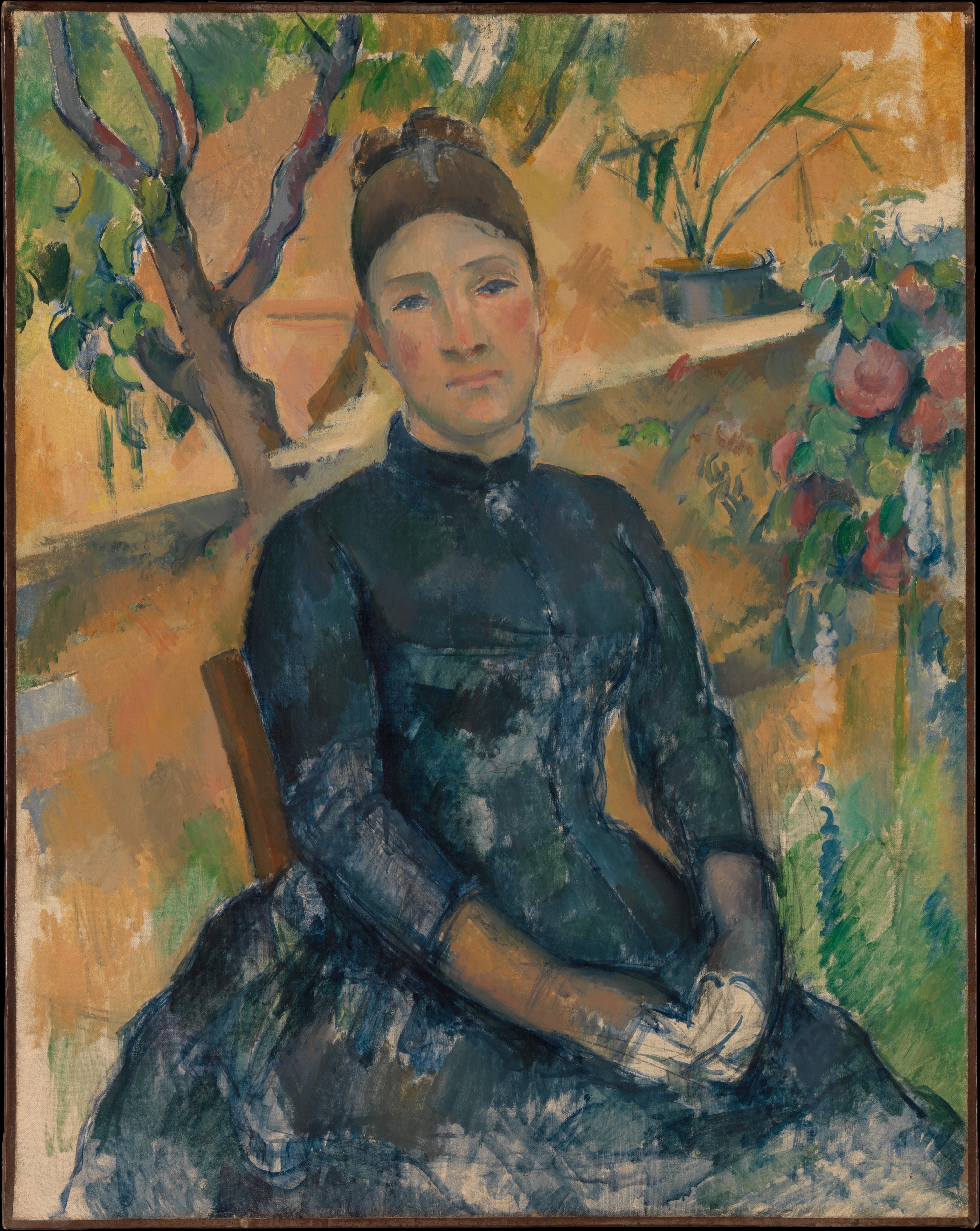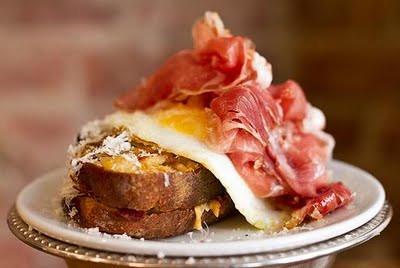Hortense Fiquet, stares impassively. She is not strikingly beautiful, hardly, and her oval face is pale and smooth like a hard-boiled egg. You wonder what the artist saw in her face that compelled him to paint her 29 times, excluding sketchbook after sketchbook of Hortense’s pencil drawings.
She is Madame Cézanne, Paul Cézanne’s lover, wife, the mother of his only son and his most painted model. The Metropolitan Museum of the Art has put together the “Madame Cézanne” Exhibit (Nov 19, 2014 ~ Mar 15, 2015), bringing together 24 of the artist’s painting of Hortense.

Madame Cezanne in the Orchard (image credit: MET Museum)
To understand the significance of the woman behind the great man, we must first find out about the man.
Cézanne, a Post-Impressionist painter, has inspired modernist painters like Picasso. Cézanne rejected Impressionism’s emphasis on light and color, and turned to structure, order. Jackie Wullschiager wrote in a review for the Financial Times:
Cézanne’s directness — the balance, pictorial logic, simplification of natural forms to geometric essentials — laid the foundations of modern art
That “directness,” is visible even when painting Hortense. Cézanne absorbed her face, exploring the sharp angles and planes of her face, painting it over and over, and reducing it to odd geometry. The artist was not concerned with replicating her face. Instead, he ventured into early abstract art, freeing the painting from the need to represent reality.
But I wonder, had Cézanne looked at Hortense beyond a paintable object, would they be happier as a couple? Continue reading →
Like this:
Like Loading...







